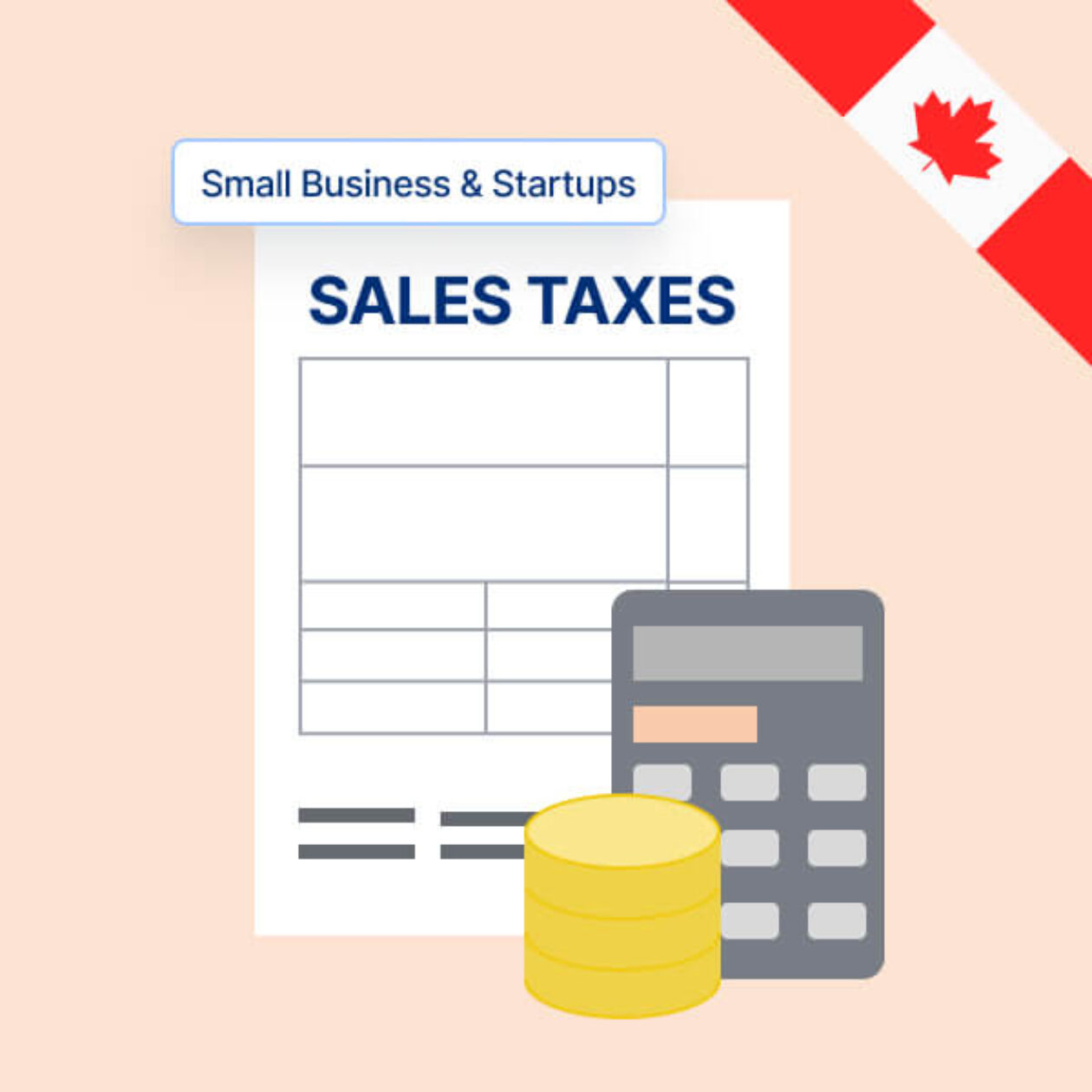
Mastering Sales Tax Compliance in Canada
Studies suggest that thousands of new businesses open in Canada each month. Want to open a business in this amazing country and make your mark? As a startup founder, you may find sales taxes in Canada quite different than your country of origin – especially if you are a foreigner or a Canadian citizen unfamiliar with the laws for sales collection & remittance.
When you’re selling goods and services online, sales taxes in Canada become more complex. The good thing is that Canadians have to abide by the “place of supply rule,” making GST/HST application relatively simple.
But, figuring out provincial taxes can be a headache, so it’s important to determine the place of supply, which is how the Canadian Revenue Agency (CRA) checks your compliance. You’ll have to figure out:
- What are you selling?
- Where is your business located?
- Who are you selling your product to?
That’s how the CRA decides the tax rate you must charge your consumers per territory. This blog will teach you everything you need to learn about Canada’s federal and provincial sales taxes. Let’s dig into the world of sales tax in Canadian provinces for new Canadian businesses.
Sales Tax in Canada: A Guide for New Businesses
As a new business owner, you may want to know about your GST/HST obligation, and additional Provincial Sales Tax requirements.
Merchants who sell goods & services to other Canadians deal with two types of sales taxes:
- GST/HST: Goods and services tax is applied nationally. Some provinces levy a harmonized sales tax (HST) which includes a provincial portion of the sales tax but the CRA administers it.
- PST: Provincial sales tax is levied by a province and territory in addition to GST.
Now, let’s look into your sales tax obligations.
| Territory/Province | GST | PST | QST | RST | HST | Total | |
| HST | New Brunswick | 5% | 10% | 15% | 15% | ||
| Newfoundland and Labrador | 5% | 10% | 15% | 15% | |||
| Nova Scotia | 5% | 10% | 15% | 15% | |||
| Ontario | 5% | 8% | 15% | 13% | |||
| Prince Edward Island | 5% | 10% | 15% | 15% | |||
| GST | Alberta | 5% | 5% | ||||
| Northwest Territories | 5% | 5% | |||||
| Nunavut | 5% | 5% | |||||
| Yukon | 5% | 5% | |||||
| Dual Sales Tax | Quebec | 5% | 9.975% | 14.975% | |||
| Manitoba | 5% | 7% | 12% | ||||
| British Columbia | 5% | 7% | 12% | ||||
| Saskatchewan | 5% | 6% | 11% |
Online Sellers
You should determine if your supplies are taxable or not. These supplies can range from actual properties like land or buildings to intangible personal property like intellectual property rights. In regions like British Columbia, Saskatchewan, Manitoba, and Quebec, you have to pay PST as well (in addition to GST).
For instance, a province levying 6% PST means that businesses operating there will now pay a total tax rate of 11% (since GST is 5%). So, online sellers in Canada will have to pay sales tax (if their revenue exceeds the set threshold). As of 2025, this threshold is 30,000 CAD in taxable revenue over the past four consecutive calendar quarters.
SaaS and BaaS Companies
Companies offering software as a service (SaaS) or banking as a service (BaaS) facilities have to charge HST or GST based on their customer’s location. If you’re selling to non-Canadians, you won’t have to charge/remit Canadian sales tax. Frequently visiting the US for business purposes (i.e., attending conferences or participating in trade shows) will establish this nexus.
Marketplace Facilitators
Marketplace operators and facilitators must also register for sales tax collection, especially if they are collecting these taxes in multiple jurisdictions. Most online marketplace platforms have to simply use the normal procedures for charging sales taxes.
Consulting Companies
Things get a little tricky when it comes to consulting companies. Working with Canadian clients requires you to charge HST, GST, or applicable PST based on your client’s location. However, a business dealing with non-Canadian clients doesn’t have to charge/remit sales taxes in Canada. But if your company is based outside of Canada (let’s say, the US, perhaps), and you’re selling to Canadian clients while you are in Canada, they may need to withhold 15% of their payment to you.
This is due to a Canadian tax regulation called Regulation 105, which applies to payments for services performed in Canada by non-residents.
Nonprofit Donation Platforms
Lastly, fundraising platforms for Canadian nonprofits provide CRA-compliant donation receipts, letting donors qualify for charitable tax credits. To issue official donation receipts for income tax purposes, the platform must be a registered charity under the Income Tax Act. The platform may display the content of each receipt in both Canadian French and Canadian English languages.
Key Tidbits about Taxation in Canadian Provinces
Want to learn more about Canadian GST and HST rates? This blog will now give you a few simple pieces of digestible, easy-to-comprehend chunks of information.
You should keep these fundamentals in mind when making sense of sales taxation in Canada:
- Location is Everything: When selling goods or services online, you should note the IP address of the buyer to pinpoint their location (the “place of supply) and charge the right amount.
- GST or HST Registration: You should determine your taxable sales by checking if you have reached the threshold or not. So, if your supply has earned you over 30,000 CAD, you should charge GST/HST on that supply.
- Small Supplier Status: The government will treat you as a small supplier if your annual earnings are less than $30,000; you might still have to charge provincial taxes but GST and HST are optional underneath the$30,000 CAD threshold.
- Provincial Sales Tax: Selling taxable supplies (i.e., goods & services) in provinces like Quebec, Manitoba, Saskatchewan, or British Columbia means you now have to register for PST as well.
- Remittance Frequency: The Canadian government will determine the frequency of your payments and communicate that expectation. However, generally speaking, here’s what you can expect based on your annual revenue (in CAD):
- Less than $1.5 million = remit sales tax annually
- $1.5-6M = remit sales tax quarterly
- $6M+ = remit sales tax monthly
- Selling Outside Canada: You may not have to worry about GST/HST/PST if you’re selling to non-Canadians who are purchasing these products outside of Canada. If a foreigner does make a purchase from you in Canada, however, then these GST/HST obligations come into play.
- US Sales Taxes: If you’re selling goods and services to someone based in the US, then you only charge them state sales tax if you fall under that state’s Sales Tax Nexus, i.e., you have an office, branch, employee, or warehouse in that state.
- VAT in the EU or UK: If you have customers based in the United Kingdom or European Union, you may have to charge VAT.
- Penalties: If you don’t file or remit your taxes properly then the government may end up taking action against you.
- Use Tax Compliance Software: You should start on the right foot by using tax software. These software solutions can calculate the correct amount in sales taxes. Also, there are tools you can use to automatically remit taxes on taxable supplies.
- Marketplace Complexities: When it comes to sales tax compliance as a marketplace facilitator (offering services/products through online platforms), that’s when taxation can get a little confusing. So, you might want to talk to tax experts in Canada about that.
- GST/HST Account Number: You generally receive a GST/HST account number when you request a business number with the Canada Revenue Agency.
Final Remarks
Now you understand the basic sales tax rules in the country of Canada. Look into if you have to pay GST or HST (as per your tax liability). You should also utilize an HST calculator (or a PST one) available online. That’s how you can determine what your taxable sales are and how much taxes you should pay.
Join 15,000+ eCommerce owners
Stay informed on sales tax news — sign up for our free newsletter.
